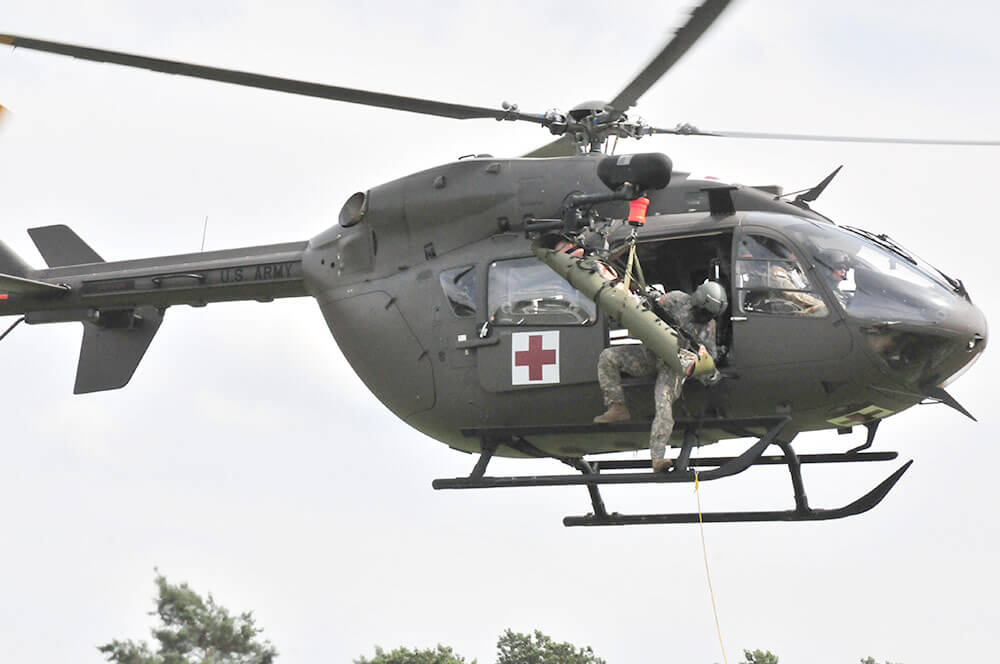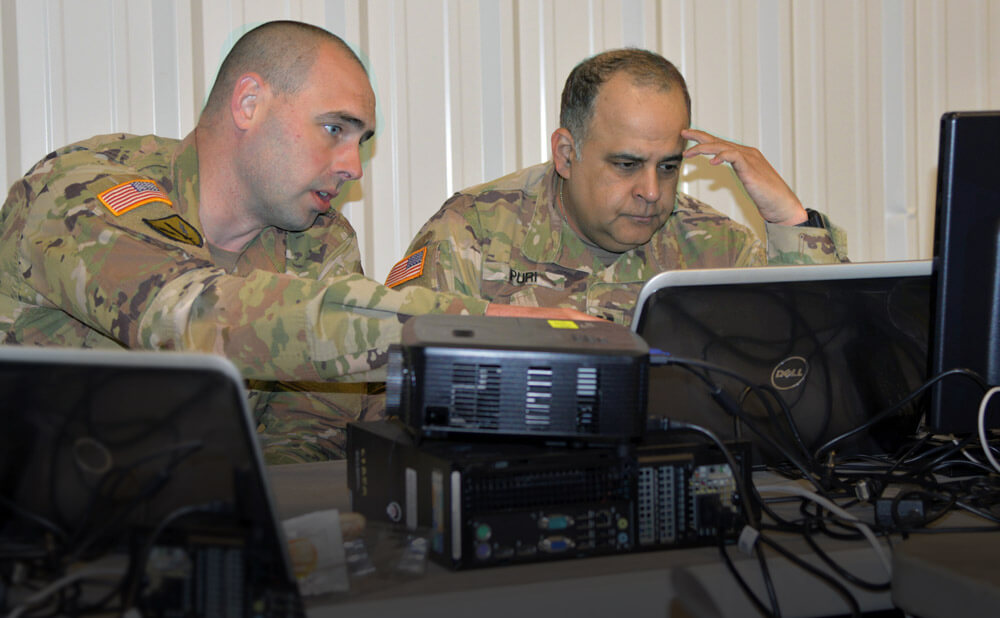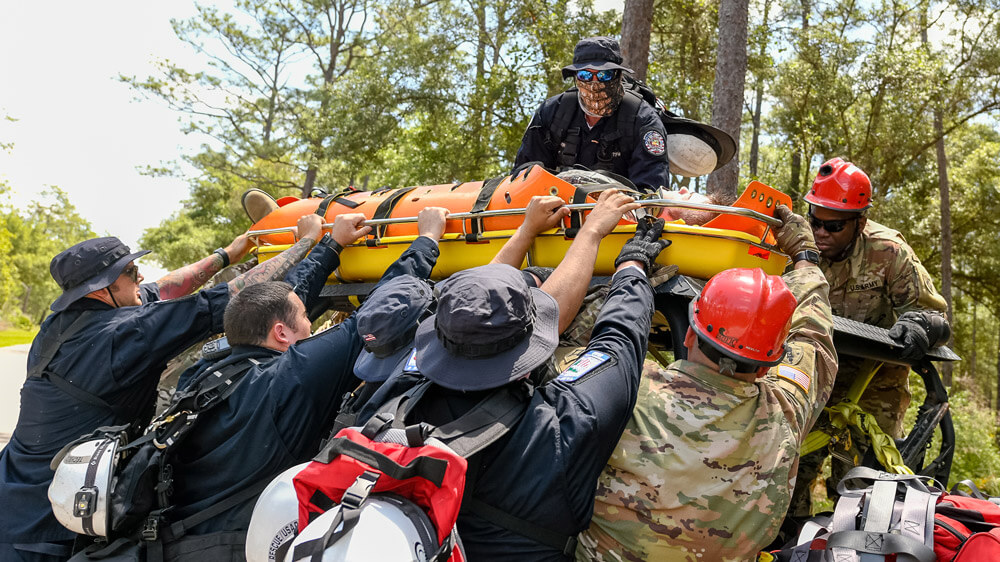A UH-72A Lakota hovers over the landing zone in Grafenwoehr, Germany, and a flight medic is lowered about 100 feet to an open field.
Once clear, he rushes to the nearby ambulance to link up with the Grafenwoehr Army Health Clinic medical team to assess the simulated casualty and prepare it to be hoisted up to the helicopter. The teamwork was part of the emergency medical evacuation demonstration in late June, at Grafenwoehr Training Area.
Although this may seem like training as usual for any military installation, this demonstration was different because Iowa and Nebraska Army National Guard Soldiers used a Lakota instead of the usual UH-60 Black Hawk.
“We’ve taken it over from the active duty unit, so they can be freed up to go do some training, and it gives us a chance to show our capabilities,” said CW3 Courtney Miller, a Nebraska Army National Guard pilot from Delta Company, 1st Squadron, 376th Aviation Battalion, who flew the mission.
The Lakota aircrews with the 1-376th took over the mission from an active duty Black Hawk unit, C Company, 1st Squadron, 214th Aviation Battalion, so the UH-60 crews could participate in training missions such as Saber Strike in Poland.
Soldiers from the Iowa, Nebraska and North Dakota National Guard rotated through Bavaria three weeks at a time between late May and late August, offering military air medevac support to the training areas at Hohenfels and Grafenwoehr.
The medevac support mission was developed and coordinated by the Nebraska National Guard, which saw an opportunity to expand the capabilities of its pilots and support a larger mission in Europe.
“Out here, the people have been very friendly to us and welcoming us in,” CW3 Miller said. “They have been real curious about our air frame and our mission and our capabilities.”
Over the previous several months, these crews trained on the medevac mission and hoist and lift operations to prepare for their mission in Germany.
“This is like their Super Bowl,” said MG Tim Orr, the adjutant general of the Iowa National Guard, who was on hand to view the demonstration and visit with his deployed Soldiers. “So today, I think they set a new course record that could be used in the future to employ our assets around the world to do great things.”
Because the Lakota has no configurations for mounting weapons or anti-air defense measures, the air frame has no offensive or defensive capabilities. Due to these limitations, it cannot operate in combat environments or be deployed to a combat zone.
“This was the first time the [Security and Support] organizations have been outside of the States and tied to a mission set outside of homeland defense,” MG Orr said.
Typically, these crews perform the SNS mission in support of local and State law enforcement activities, such as drug raids or other missions that require air support.
By CPT Joseph Bush, Joint Multinational Readiness Center



